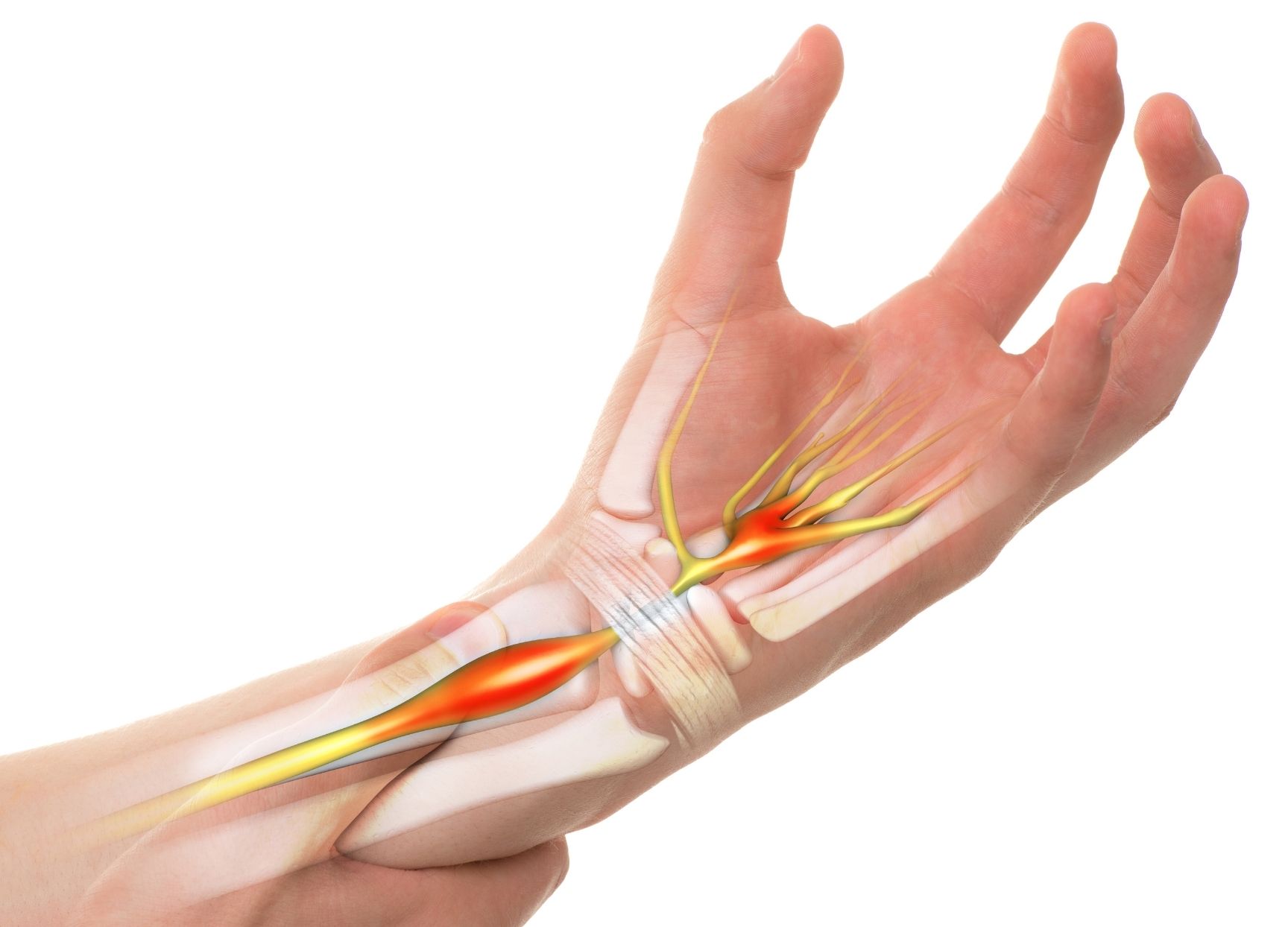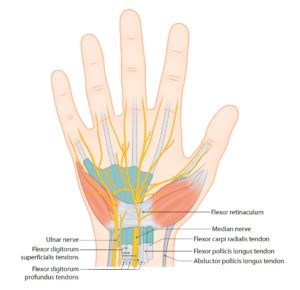
Mr Sam Gidwani
Specialist expertise: Hand and Wrist Surgery, Orthopaedics, Sports Injuries, Hand & Wrist, Trigger Finger, Carpal Tunnel, Cubital Tunnel, Arthritis.
Consultant Hand & Wrist Surgeon, Mr Sam Gidwani at OneWelbeck explains more about this troublesome condition below, covering the causes of carpal tunnel syndrome, the symptoms of the condition, diagnosis and treatment.

Carpal tunnel syndrome is the commonest ailment that affects the hand, often affecting people of working age, with typical symptoms including pins and needles, or discomfort and numbness of the fingers and thumb.
It is caused by pinching or compression of an important nerve, called the median nerve, at the point where it enters the hand – via a space known as the “carpal tunnel” (see figure 1). It traverses this space in the company of nine tendons, passing through a tunnel made up of an arch of bones below, and a tough ligament above (see figure 2). Carpal tunnel syndrome is not usually inherited.

Fig. 1

Fig. 2
The classic symptoms of this condition are of waking up at night with pins and needles, discomfort and numbness of the fingers and the thumb. Often the individual concerned will shake their hand or move their fingers and wrist to gradually restore normal feeling, and then go back to sleep. These symptoms can also occur intermittently during the day after activities such as driving, cycling or holding a telephone. People sometimes complain about dropping objects or having difficulty doing up buttons. In severe cases the numbness can become constant and the hand can even become weak.
When the individual’s symptoms are very typical, the diagnosis is often straightforward. Sometimes however other possible causes need to be considered – such as compression of nerves in the neck, or elsewhere in the arm. In such cases it is helpful to carry out specialist tests known as nerve conduction studies and electromyography (EMGs). These are carried out by medical specialists known as neurophysiologists. Occasionally imaging tests such as ultrasound scans or MRI scans may also be helpful.
If the symptoms are mostly nocturnal, initial treatment involves the use of a wrist splint at night, to keep the wrist from being held in a flexed position while sleeping. In some cases, steroid injections into the carpal tunnel can be helpful, and these can be safely administered either by your hand surgeon in the clinic, or with the guidance of an ultrasound scan. Unfortunately, the effect of steroid injections can be temporary. In severe cases, or in cases which have not responded to splintage and/or injections, an operation known as a “carpal tunnel release” is the definitive treatment.
The operation is done as a day case procedure. It involves cutting the tough ligament that forms the roof of the carpal tunnel, allowing the two edges to spread apart, thereby reducing the pressure on the median nerve as it passes through the tunnel. This is most often accomplished with an “open” technique, using a 3-4cm incision at the base of the palm. The operation can also be carried out using a minimally-invasive (endoscopic) approach. Both techniques have a similar success rate of approximately 95%.
Here at OneWelbeck, we have a team of orthopaedic specialists, state of the art facilities and diagnostics, and highly competitive financial packages for self-funding patients as well as those with private health care.
Contact UsMr Sam Gidwani is a Consultant Orthopaedic Surgeon at OneWelbeck Orthopaedics. He regularly treats musicians, as well as professional and amateur sportsmen and women, and was one of the surgeons dealing with athletes’ hand and wrist injuries during the 2012 London Olympics.